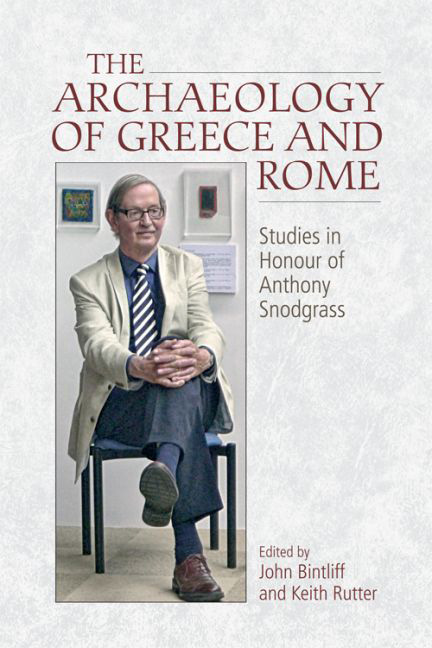Book contents
- Frontmatter
- Contents
- Preface
- List of Contributors
- List of Abbreviations
- Section I Prehistory
- Section II Around Homer
- Section III The Archaic and Classical Greek World
- 7 Potters, Hippeis and Gods at Penteskouphia (Corinth), Seventh to Sixth Centuries bc
- 8 Space, Society, Religion: A Short Retrospective and Prospective Note
- 9 Modelling the Territories of Attic Demes: A Computational Approach
- 10 Hesiod and the Disgraceful Shepherds: Pastoral Politics in a Panhellenic Dichterweihe?
- 11 ‘Is Painting a Representation of Visible Things?’ Conceptual Reality in Greek Art: A Preliminary Sketch
- 12 Coins in a ‘Home Away from Home’: The Case of Sicily
- Section IV The Greeks and their Neighbours
- Section V The Roman and Much Wider World
- Section VI The Scholar in the University and in the Field: Personal Histories
- Index
12 - Coins in a ‘Home Away from Home’: The Case of Sicily
from Section III The Archaic and Classical Greek World
Published online by Cambridge University Press: 26 May 2017
- Frontmatter
- Contents
- Preface
- List of Contributors
- List of Abbreviations
- Section I Prehistory
- Section II Around Homer
- Section III The Archaic and Classical Greek World
- 7 Potters, Hippeis and Gods at Penteskouphia (Corinth), Seventh to Sixth Centuries bc
- 8 Space, Society, Religion: A Short Retrospective and Prospective Note
- 9 Modelling the Territories of Attic Demes: A Computational Approach
- 10 Hesiod and the Disgraceful Shepherds: Pastoral Politics in a Panhellenic Dichterweihe?
- 11 ‘Is Painting a Representation of Visible Things?’ Conceptual Reality in Greek Art: A Preliminary Sketch
- 12 Coins in a ‘Home Away from Home’: The Case of Sicily
- Section IV The Greeks and their Neighbours
- Section V The Roman and Much Wider World
- Section VI The Scholar in the University and in the Field: Personal Histories
- Index
Summary
Part of your early career, Anthony, and several of your subsequent writings, were devoted to the archaeology of Sicily. That was even before those Munro-bagging days when you tirelessly led your Edinburgh colleagues come rain or shine over the rugged Bens, Sgurrs, Stobs and Mealls of Scotland. And so in this contribution to your Festschrift it is to Sicily, and in particular its coinages, that I wish to return. Thucydides gave us the essentials of the settlement of Sicily in Archaic and Classical times (VI.2–5): in the interior of the island the Sicels and Sicani, themselves with a tradition of immigration; in the west two further immigrant groups, Elymians based principally on Segesta and Eryx, and Phoenicians from Carthage holding Motya, Panormus and Soloeis; finally, around other parts of the coasts, Greeks of varied origins who had settled from the second half of the eighth century BC. Most of these communities had produced coinage by 400 BC, some of it fairly plentiful. Coins are part of a culture and they should be able to provide significant information about the peoples who made and used them. The early coinages of Sicily provide an ideal field in which to pursue such wider questions, of the sort that have engaged you from the outset of your career: I mention just one example (Snodgrass 1994: 1), where you referred to the ‘robust independence’ of the new settlements, their ‘challenge [to] the attainments of the Aegean cities by a wide range of criteria’, their ‘cosmopolitanism’ and the ‘degree of integration of indigenous and intrusive populations, and between intruders of different origins’.
The details of the chronology of early Greek coinage, from the first electrum coinages of western Asia Minor to the development of the new medium of exchange as a Mediterranean phenomenon, are still debated, but the speed of the spread of the idea of coining is not in dispute. The beginnings of coinage in Aegina on the one hand and in Italy and Sicily on the other seem to be separated by only a few decades around the middle of the sixth century.
- Type
- Chapter
- Information
- The Archaeology of Greece and RomeStudies In Honour of Anthony Snodgrass, pp. 289 - 314Publisher: Edinburgh University PressPrint publication year: 2016



